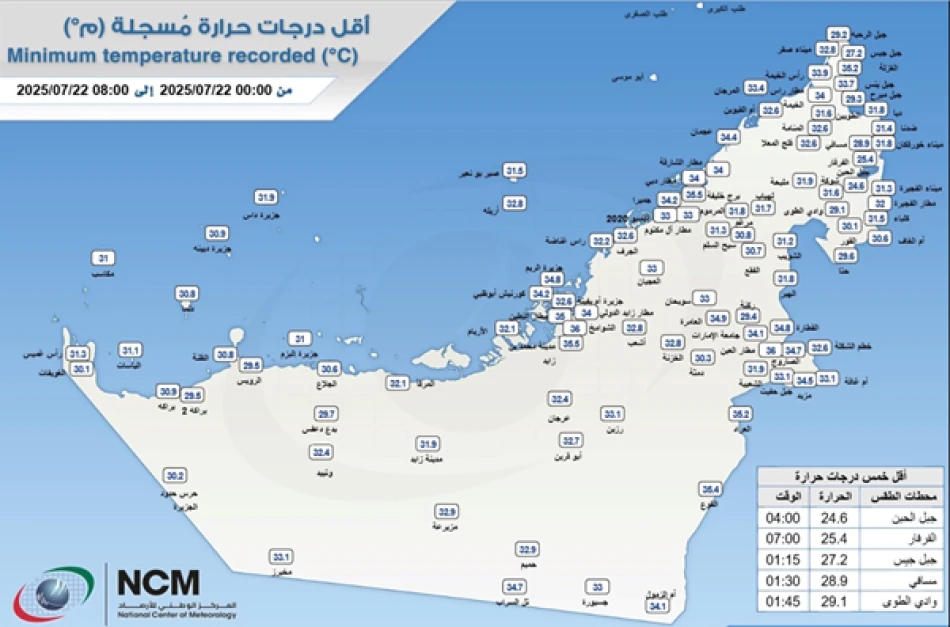
Fujairah's Jebel Al Habun Hits Lowest Temperature in UAE
UAE Records Unusually High Winter Low as Climate Patterns Shift
The UAE's National Center of Meteorology reported that the country's lowest temperature on Tuesday morning reached 24.6°C (76.3°F) at Jebel Al Habn in Fujairah at 4:00 AM local time—a reading that underscores the nation's consistently warm climate even during its coolest winter months.
Winter Temperature Patterns in the Gulf
The recorded temperature at Jebel Al Habn, located in the mountainous region of Fujairah on the UAE's eastern coast, represents typical winter conditions for the Emirates. While 24.6°C might seem remarkably warm to residents of temperate climates experiencing sub-zero temperatures, it falls within the expected range for the UAE's winter season, which runs from December through February.
Fujairah's mountainous terrain typically records the country's lowest temperatures due to its elevation and distance from urban heat islands. The emirate's location along the Gulf of Oman, sheltered by the Hajar Mountains, creates microclimates that can be several degrees cooler than the desert interior or coastal cities like Dubai and Abu Dhabi.
Regional Climate Context
The UAE's winter temperature patterns reflect broader Gulf climate characteristics. Neighboring countries like Saudi Arabia, Qatar, and Oman experience similar mild winter conditions, though Saudi Arabia's higher elevation areas can see significantly cooler temperatures, occasionally dropping below 10°C in northern regions.
Implications for Energy and Tourism
These consistently warm winter temperatures have significant economic implications for the UAE. The mild weather reduces heating costs to virtually zero while maintaining optimal conditions for the country's peak tourism season. Winter months typically see hotel occupancy rates exceed 85% as visitors from colder climates seek the UAE's reliable warm weather.
For the energy sector, winter represents a brief respite from the massive cooling demands that drive electricity consumption to peak levels during summer months when temperatures regularly exceed 45°C. This seasonal variation allows utility companies to perform maintenance on power generation infrastructure before the intense summer demand period.
Climate Monitoring and Future Trends
The National Center of Meteorology's precise temperature monitoring serves multiple purposes beyond daily weather reporting. This data contributes to long-term climate modeling that helps government planners prepare for potential changes in weather patterns, urban planning needs, and agricultural planning in the country's growing food security initiatives.
As global climate patterns continue evolving, the UAE's investment in weather monitoring technology positions the country to adapt its infrastructure and economic planning accordingly. The consistency of winter temperatures like those recorded at Jebel Al Habn provides a baseline for measuring any future climatic shifts in the region.
Most Viewed News

 Layla Al Mansoori
Layla Al Mansoori






